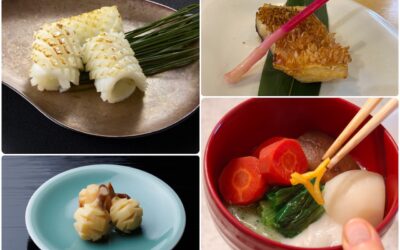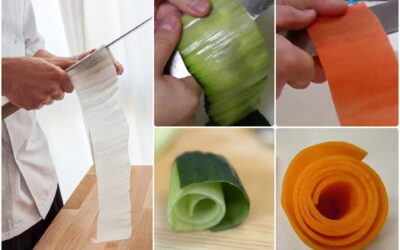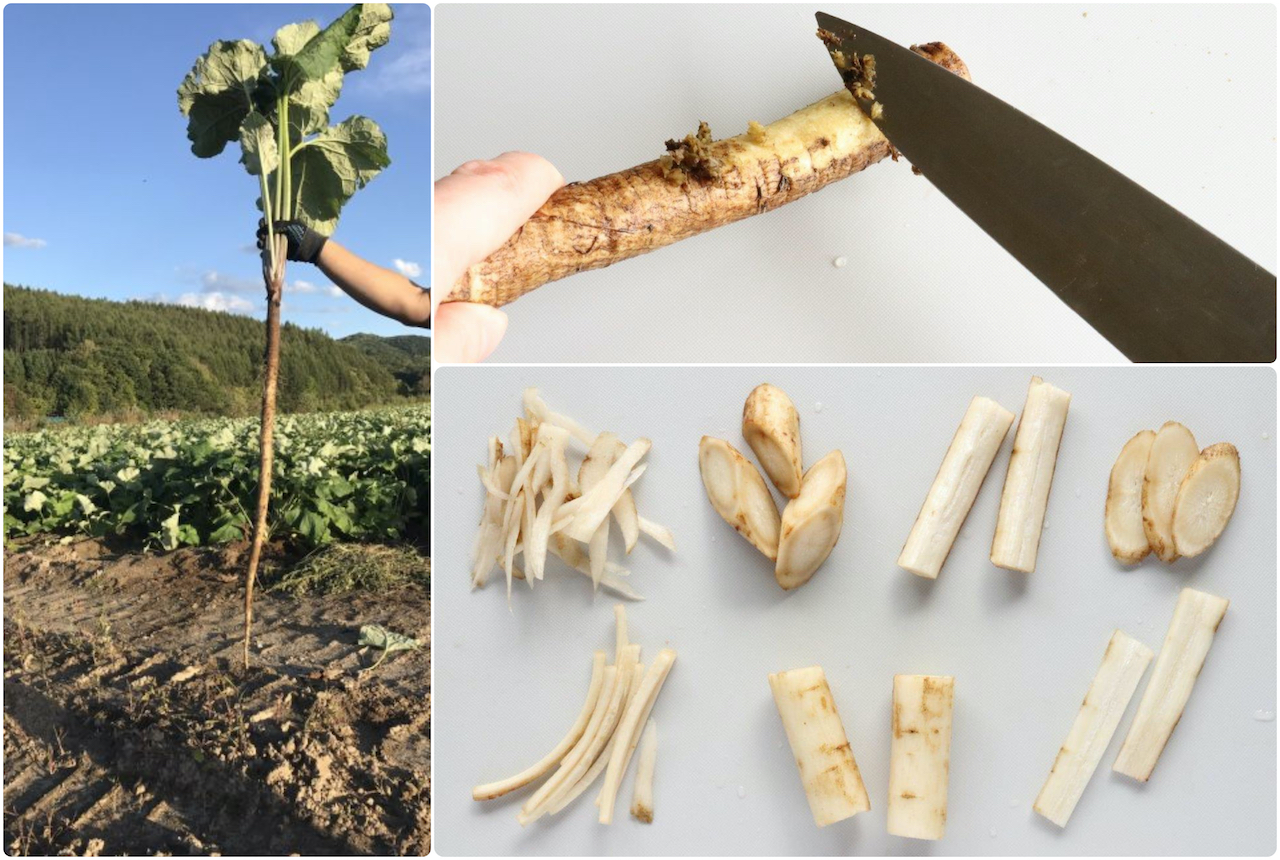
PROJECT Cutting & Slicing
This Kitchen PROJECT is about cutting & slicing ingredients to maximize flavor, texture and appearance while minimizing waste. Specific examples below focus on gobō cut three different ways:
SASAGAKI 笹掻き
SENGIRI 千切り
RANGIRI 乱切り
These cutting techniques are basic to Japanese cookery and can be performed with any knife – no special equipment needed.
Kimpira can be made using the sasagaki technique to produce shreds OR with the sengiri (julienne-like) shredding technique. Try both ways, and compare your results. Did the irregular shapes and surfaces of sasagaki shreds shorten (or lengthen?) the cooking time compared to matchstick-like sengiri shreds? Did one, or the other technique seem to help, or hinder, flavor distribution? Which technique produced better (tastier, more attractive, easier) results for you?
Similarily, Chikuzen Ni can be made with vegetables cut using the rangiri technique to produce multi-faceted chunks OR with ordinary cubed or diced vegetables. Try both ways, and compare your results. Did rangiri cutting shorten, or lengthen, the cooking time compared to ordinary cubes? Did rangiri-cut ingredients seem to help, or hinder, flavor transfer and distribution? Which technique produced a more attractive dish in your opinion?
(If gobō is difficult for you to source, use carrots or other long, slender ingredients such as celery, parsnip, or narrow radishes. Whatever ingredient you choose should be suitable for preparing dishes by several different methods (such as simmering, stewing, and skillet-searing).
To find out more about gobō visit my May (2022) Kitchen Culture blog
The theme of my May 2022 newsletter is gobō.

SASAGAKI cutting technique is often referred to as a “whittle cut” in English because the knife blade is used as though to whittle a pencil. Sasa, however, means “bamboo grass.” The long, thin shavings produced when cutting sasagaki style do resemble sasa.
An easy way to create these shavings is to slash a stick of scrapped gobō lengthwise, as though to make a “plus sign.” Then whittle the stick so that each stroke of your knife blade removes several thin strips at the same time. Rotate the stick of gobō and repeat to remove more thin shavings. Continue to rotate and whittle to produce a pile of shavings. Or, use a peeler to produce lots of thin strips.
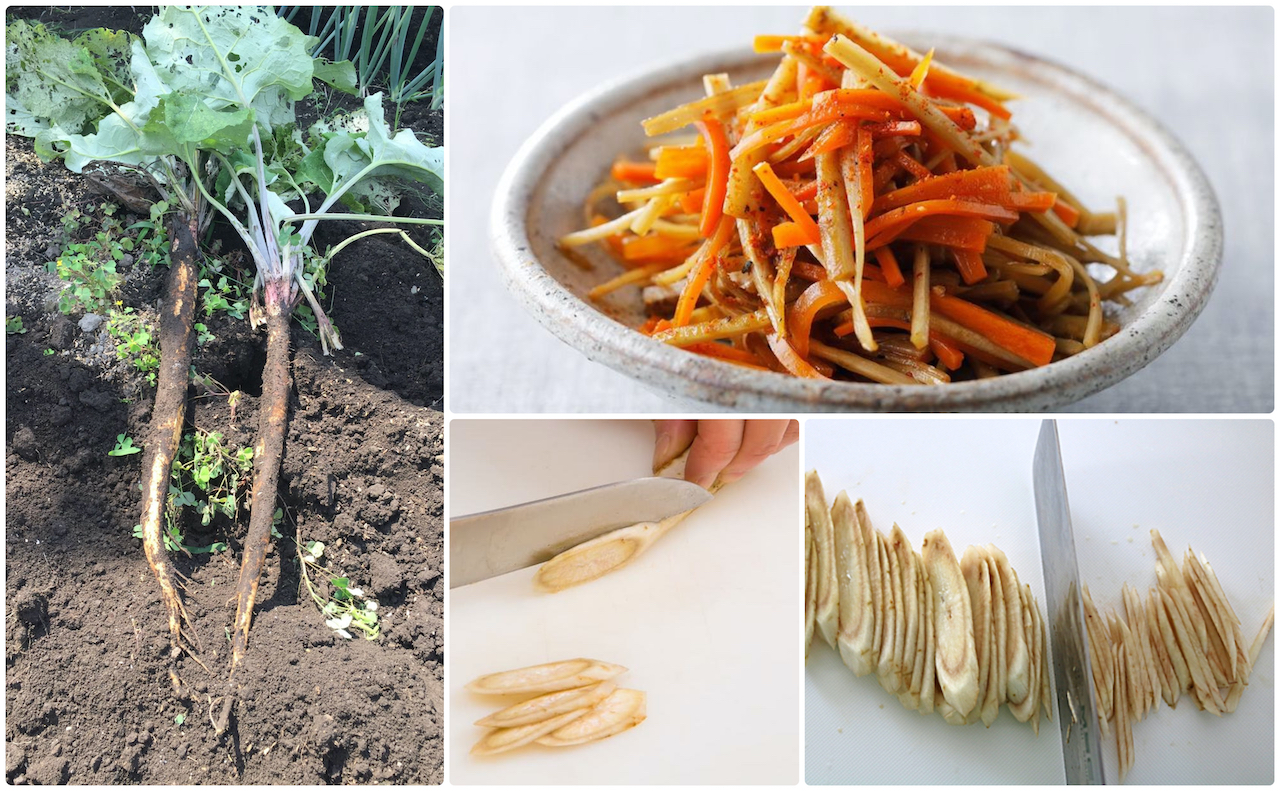
SENGIRI cutting technique is often referred to as “matchsticks” in English because the resulting piecees — narrow, square-ish strips — resemble matches. The same cut can also be referred to as julienne, after the French technique. Sengiri, however, means “1000 cuts” referring to the numerous long, thin strips produced when cutting sengiri style.
To create sengiri strips of gobō, first make many thin slices on the diagonal. Arrange these slices so they overlap slightly (domino-style) and then cut thin, lengthwise strips.
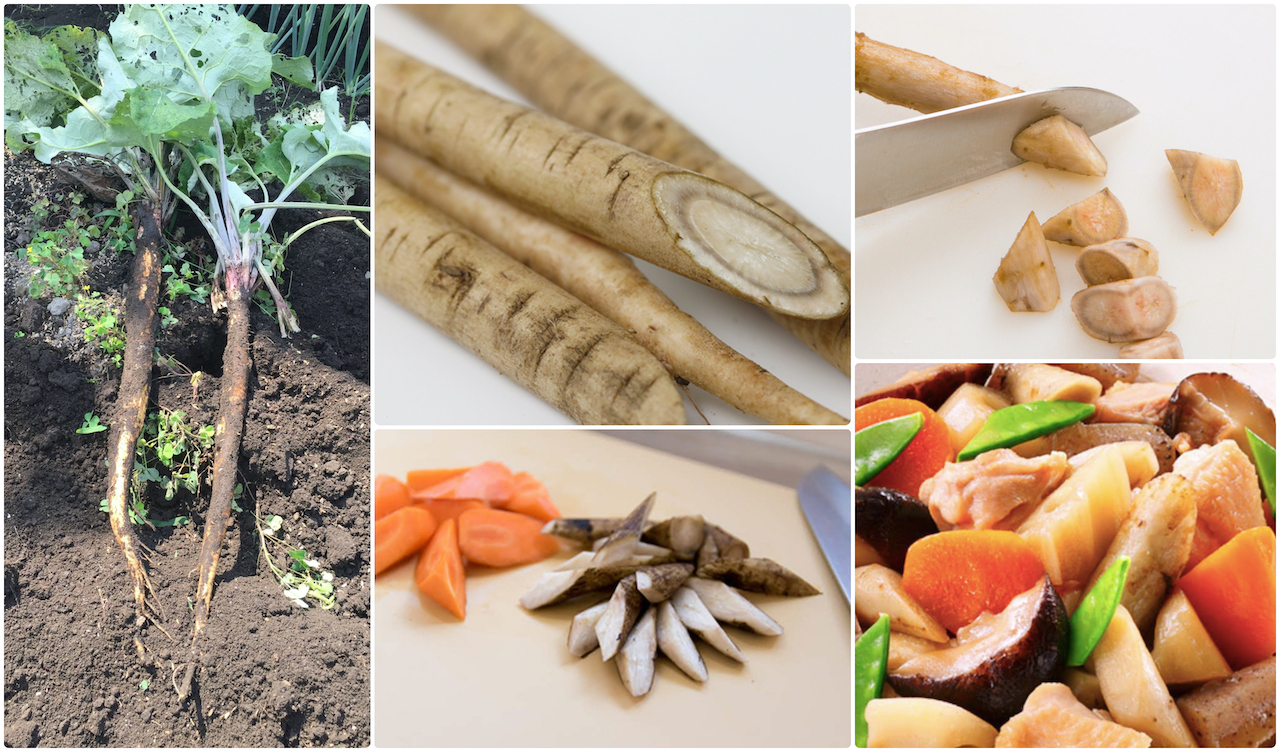
RANGIRI cutting technique produces multi-faceted chunks from long, slender vegetables (such as gobō and carrots). It is sometimes called a “roll cut” in English because the item being cut is rotated between slices. However, the word ran refers to items arranged at “random” or in “disarray.” Indeed the cut pieces appear to be haphazard pile.
To create rangiri chunks, make your first cut on the diagonal, then roll/rotate the item towards you (about a one-third turn). Repeat slicing on THE SAME diagonal. The item (gobō, in this instance) is rotated, but the position of the knife remains fixed.

